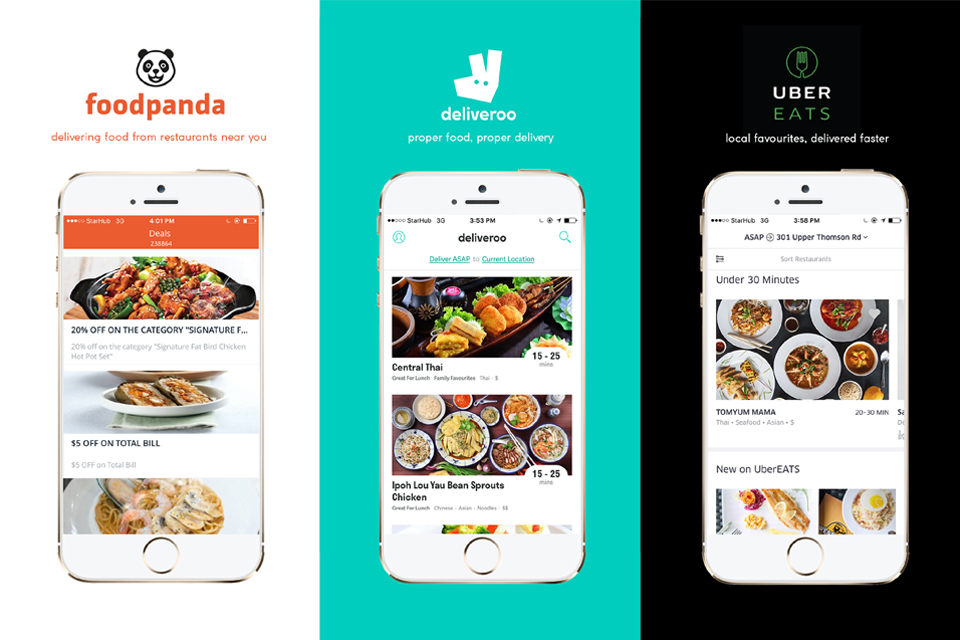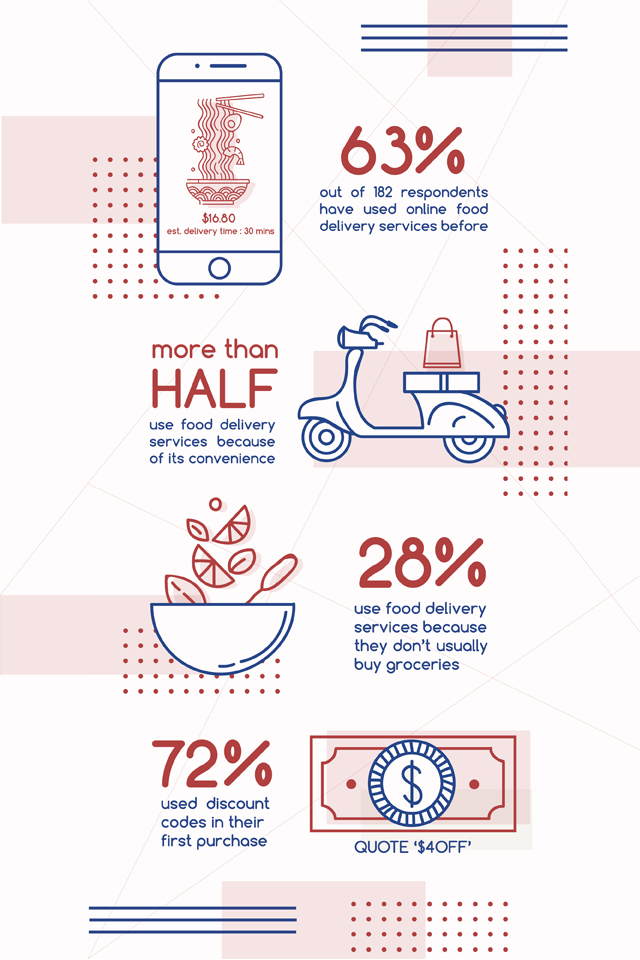From Foodpanda, Deliveroo to UberEATS, food delivery apps are stealing more hearts in Singapore.
18 months ago, Foodpanda rider Samuel Lee made just about 10 deliveries a day.
Now, the 29-year-old is making at least 25 deliveries a day and earning more, thanks to the growing popularity of food delivery apps.

“Looking back to when I first started, I could still take breaks in between deliveries but now I barely have the time to stop and buy coffee,” Mr Lee said.
The Business Times in 2016 reported that Foodpanda had a monthly growth rate of 20 per cent with returning customers placing orders at least twice a week. Similarly, Deliveroo also had a 30 per cent month on month growth since its launch in Singapore in November 2015, according to a report in The Straits Times.
Ms Sarah Tan, 27, is a regular user of food delivery services. She now places orders on UberEATS at least 4 times a week.
“I’m always piled up with work in the office and it’s very inconvenient for me to go buy food.
“With on-the-go food delivery services such as UberEATS, I get to save at least half an hour during my lunch break,” said Ms Tan.
Sharing the same sentiments, 21-year-old Jasmine Wee called online food delivery services a “life saver”, especially on days when school ends late.
She said: “The fact that these food delivery services have mobile applications and a variety of promotional codes make it even more accessible and user-friendly. (There’s no need to) trouble yourself to go out and buy food when you can do it from home.”

Besides the added convenience for users, online food delivery services have also helped boost sales for F&B players that have partnered with the companies.
According to the same article from The Straits Times, some restaurants have seen revenues rise by 15 per cent or more after partnering with food delivery firms.
One such example is Udders. The local ice cream franchise saw a rise in their sales after partnering with Deliveroo and UberEATS. Ms Cindy Quek, 24, supervisor of the Novena outlet said: “On days where business is slow moving, the partnership with food delivery firms really comes in handy as people who order online can sometimes contribute to more than 25 per cent of our daily sales.”
A frequent user of food delivery applications, Ms Tan has noticed new food delivery start-ups take flight in their business. She said: “Recently, I have seen many up and coming companies, such as Grain and Lean Bento. These two companies deliver organic home-cooked food, which I foresee will get quite popular since eating healthy is the in-thing now.”
Having worked as a rider for almost 2 years, Mr Lee thinks the demand for online food delivery services will continue to grow. He said: “This is only the beginning to its popularity.
“Most of my customers are young adults who do not have the time to cook or shop for groceries. Hence, everyone wants convenience at their fingertips, even if that means paying more.”
But for Mr Lee, he still prefers to eat out as a family as every “excursion” is a bonding opportunity. “Family time is very precious and it should be treasured.”
